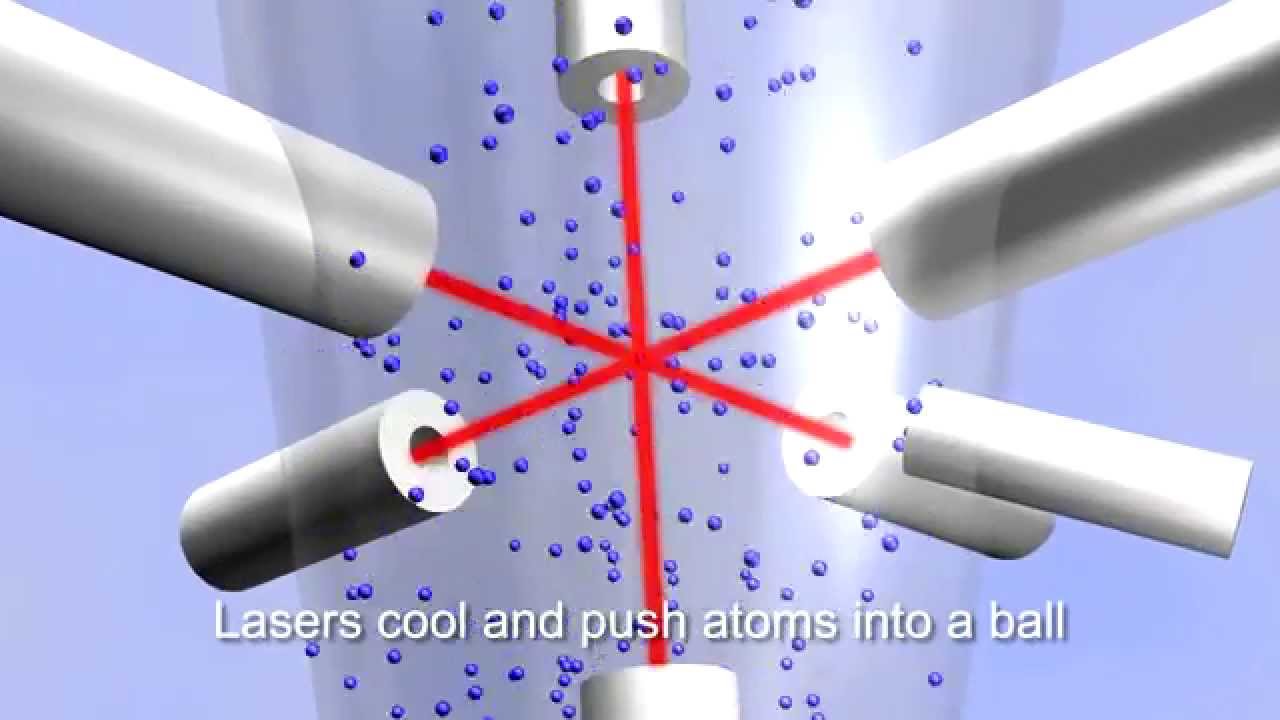The Prize’s Legacy: Dave Wineland
In 1999, NIST unveiled its NIST-F1 clock, the U.S.’s first official timekeeper to use laser-cooled atoms. The cesium-based clock, built by NIST physicists Steve Jefferts and Dawn Meekhof (also former Wineland group members), was expected to neither gain nor lose a second in more than 100 million years. Jefferts and Tom Heavner then built NIST-F2, which debuted in 2014 and is three times as accurate. Both now serve as the U.S.’s primary frequency standards.
Meanwhile, many research groups around the world have made atomic clocks using laser-cooled ions and atoms. In 2014, NIST researchers made a laser-cooled rubidium-based atomic clock with a chamber the size of a coffee mug. Also in 2014, Jun Ye, a researcher at the joint NIST-University of Colorado institute JILA, built an optical-lattice-based clock out of cold strontium atoms that edged out the aluminum clock for the world’s most accurate timepiece. In 2016, researchers at the Physikalisch-Technische Bundesanstalt (PTB)—the German counterpart of NIST—announced an ytterbium-based single-ion optical clock more precise than the aluminum-ion clock, though less than Ye’s. Each group benefits from the advances of its competitors, and at the moment, experts say it’s not clear which atom or ion will eventually replace cesium as the basis for the world’s fundamental frequency standard.
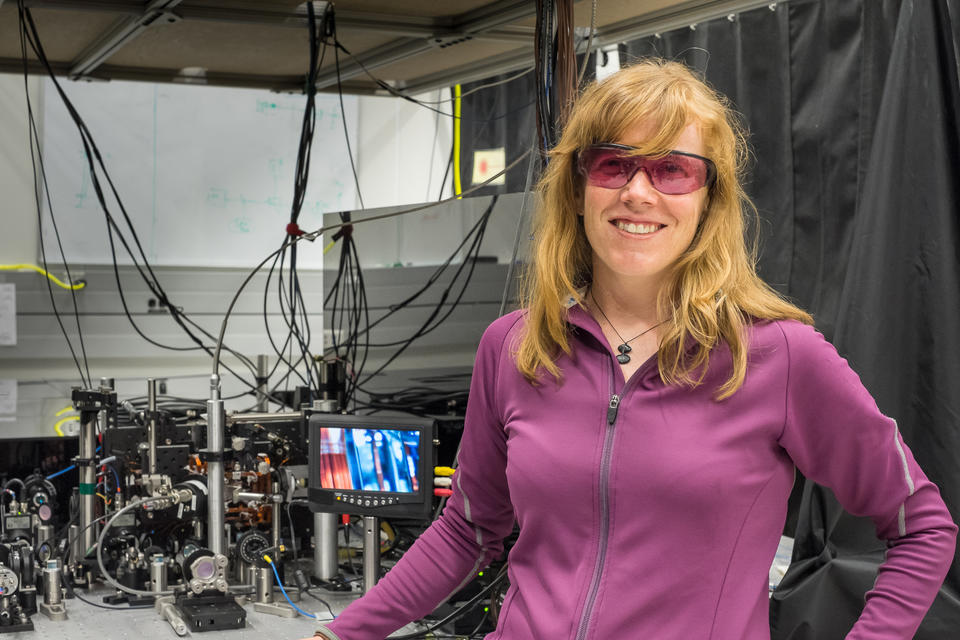
But even before they replace today’s cesium clocks, the new generation of ultraprecise atomic clocks are starting to see applications far beyond timekeeping. GPS satellites use onboard atomic clocks to pinpoint locations on Earth to within a few meters, and could become even more precise as advances from labs like Wineland’s percolate into commercial technology. “Clocks have been used in navigation for centuries, and whenever anybody’s come along with a better clock, there’s always been a use for it,” Wineland says. “The quest for better navigation never goes away.”
Atomic clocks also could help monitor shifts in Earth’s tectonic plates or movements of underground water. Ultraprecise clocks also can be used to make fundamental physics measurements, an important activity for NIST researchers.
Wineland’s group has used their clocks to demonstrate predictions from Einstein’s relativity theory that time slows down for objects moving faster or entering a stronger gravitational potential—at speeds as slow as that of a bicyclist, and differences in height as little as a foot.
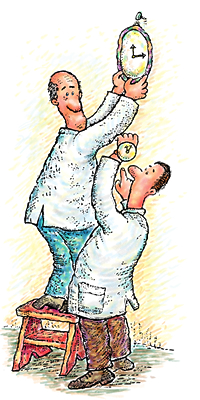
By taking the ratio of the frequencies of their mercury and aluminum ion clocks, the researchers were also able in 2008 to put one of the most stringent upper limits to date on possible variations in time of the fine structure constant, one of the most important fundamental parameters in physics.
Wineland and his colleagues see no end in sight for their atomic-physics explorations. Future plans at NIST include more precision measurements of atoms and molecules, specifically the frequencies that cause them to undergo changes in electron energy and their vibrational state; clocks based on new atoms and molecules and ultraprecise measurements of the thermal radiation that currently presents one of the largest sources of error for atomic clocks. As far as any fundamental constraint on how precise their clocks can get, Wineland says, “there’s no limit.”
The group's pioneering quantum computing experiments have inspired researchers around the world to develop this potentially revolutionary technology. Dozens of trapped-ion groups now operate at various universities and research institutions. It’s safe to say that most in the field use many of the techniques pioneered in the group’s lab.
Despite the stream of advances out of his and others’ labs, Wineland says a useful quantum computer is not exactly around the corner.
“My statement for the last 20 years has always been … it’s like a marathon race where we can still turn around and see the start line.”
But researchers are determined to continue pushing toward the finish line. In 2016, a NIST experiment led by John Bollinger entangled hundreds of ions to make a quantum simulator, and in 2014 the Innsbruck group created an error-correcting “logical qubit” out of seven individual ion-based qubits, inching ever closer to the level of control needed for a useful quantum computer. Monroe, meanwhile, recently joined with a colleague at Duke University to launch what may be the first private company to try to make a quantum computer based on trapped ions. The company will join a number of groups trying to make quantum computers based on other kinds of qubits; these include efforts by Microsoft, IBM, Google, Northrup Grumman and Lockheed Martin.
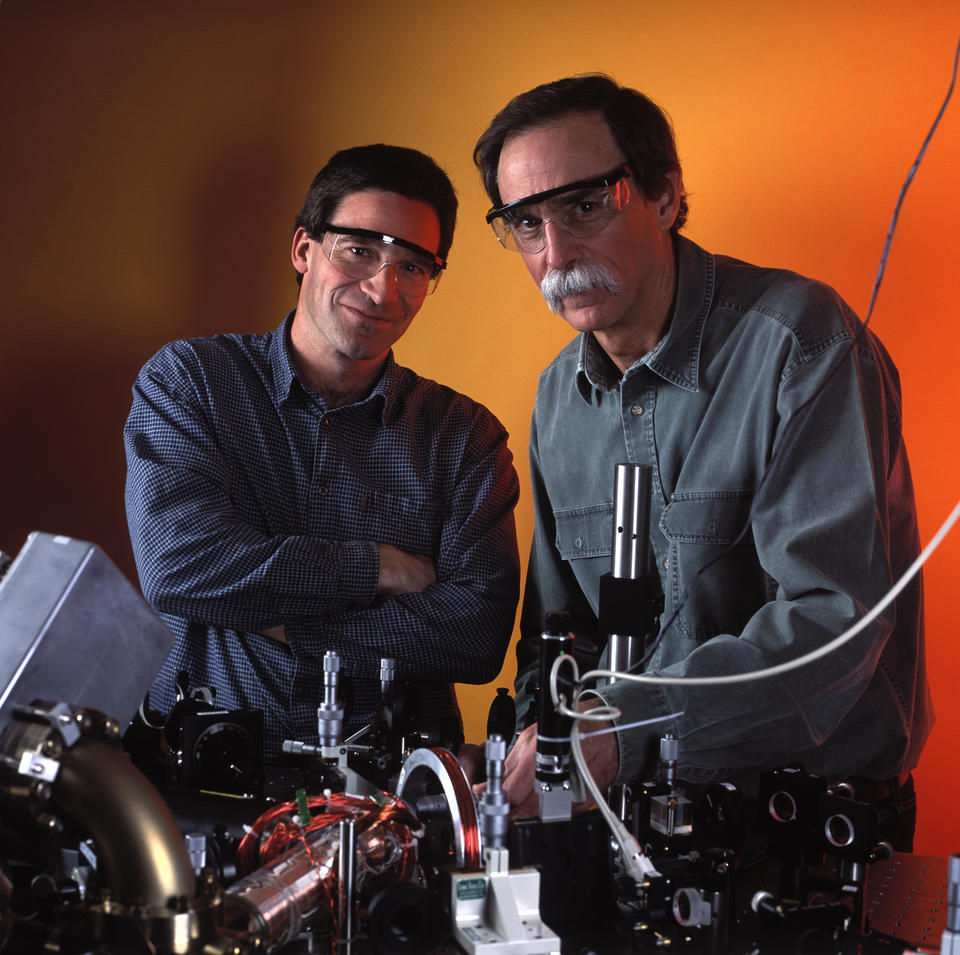
In March 2017, Wineland and his colleagues announced that they had witnessed high levels of "spooky action" between pairs of ions, adding to earlier airtight demonstrations of quantum entanglement at NIST and confirming some of the wildest predictions of quantum mechanics.
In May 2017, James Chou, Dietrich Leibfried and other members of Wineland's group, announced a method for quantum control of charged molecular ions, much harder to manipulate than the atomic ions they had previously studied.
In its press release for the 2012 Nobel Prize in physics, the Royal Swedish Academy of Sciences stated that Wineland and Haroche had developed methods for quantum-mechanical measurement methods “that were previously thought unattainable.” But for Wineland, nothing he has accomplished ever seemed out of reach.
“I think in everything we’ve done—we never felt it was unattainable; we’ve just got to do it. Part of the fun for all of us was to develop new ideas—we’re not asking for a miracle; we develop ideas with the idea in mind that we can do this,” he says. “We do it because we think it is attainable.”
In August 2017, Wineland announced he was leaving NIST to become a Knight research professor at the University of Oregon.
“It’s very difficult for me to leave; I’ve loved being at NIST,” Wineland said in a NIST statement on his departure from the agency where he worked for 42 years. “I’ll miss working alongside my NIST colleagues. They perform world-class research every day they are in the lab, and I'm sure they will continue to do so. But I now very much look forward to working with colleagues at the University of Oregon.”
“Dave is universally respected, even revered, at NIST. His impact is too profound to measure even for us, and we're measurement experts,” said Kent Rochford, the acting director of NIST. “We are all very sad to see Dave go but hope that his new University of Oregon position will include opportunities for continued collaboration. We wish him the very best in this next phase of his life and career.”
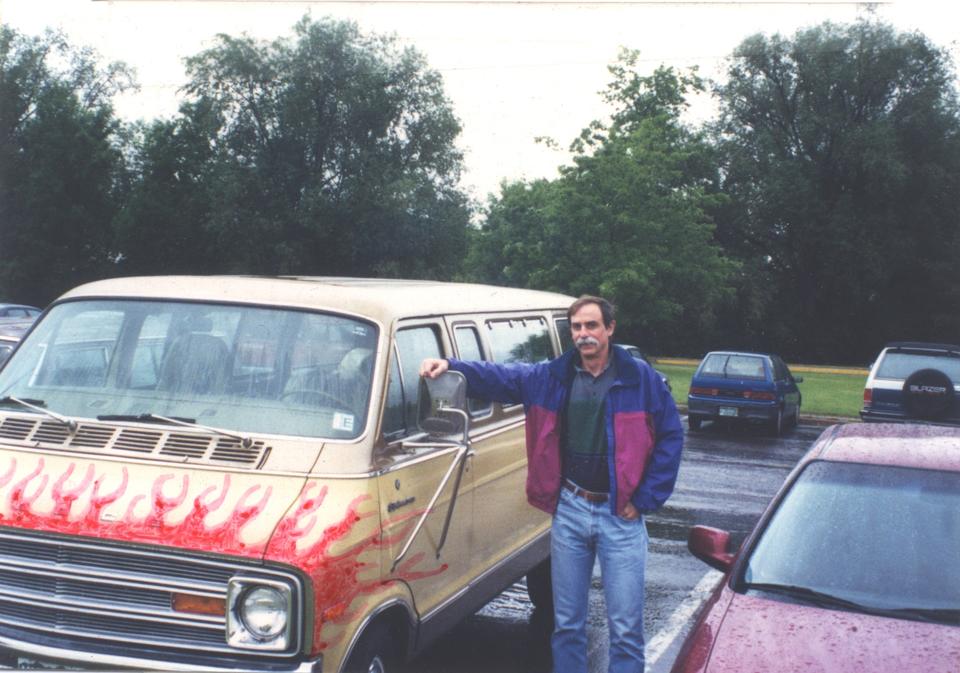
“Dave is great to work with; I don’t think there’s anyone better in the world to work with. He’s a pretty relaxed person, a very supportive person. He has a philosophy that you get good people in the lab and let them do what they do best. He’s always ready with good ideas. He has a really great understanding of fundamentals, so that he can always come in and say, ‘Did you think about this? We should worry about this kind of thing.’”
– David Hume, NIST physicist and former member of Wineland's
Additional Sources
Ion Storage Group. NIST. Web. https://www.nist.gov/pml/time-and-frequency-division/ion-storage
D.J. Wineland – Biographical." Nobelprize.org. Nobel Media AB 2014. Web. http://www.nobelprize.org/nobel_prizes/physics/laureates/2012/wineland-bio.html
D.J. Wineland - Nobel Lecture: Superposition, Entanglement, and Raising Schrödinger's Cat. Nobelprize.org. Nobel Media AB 2014. Web. http://www.nobelprize.org/nobel_prizes/physics/laureates/2012/wineland-lecture.html


